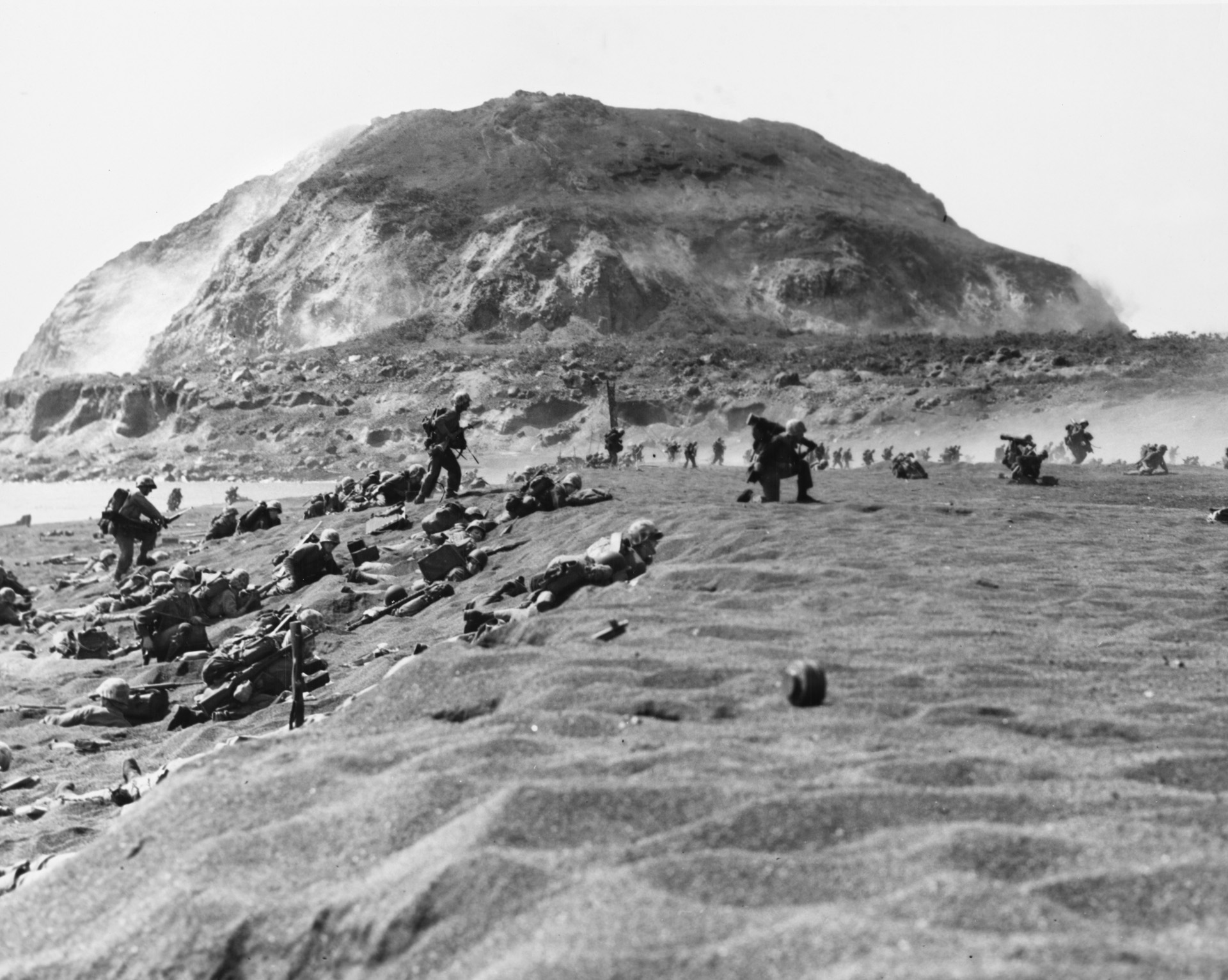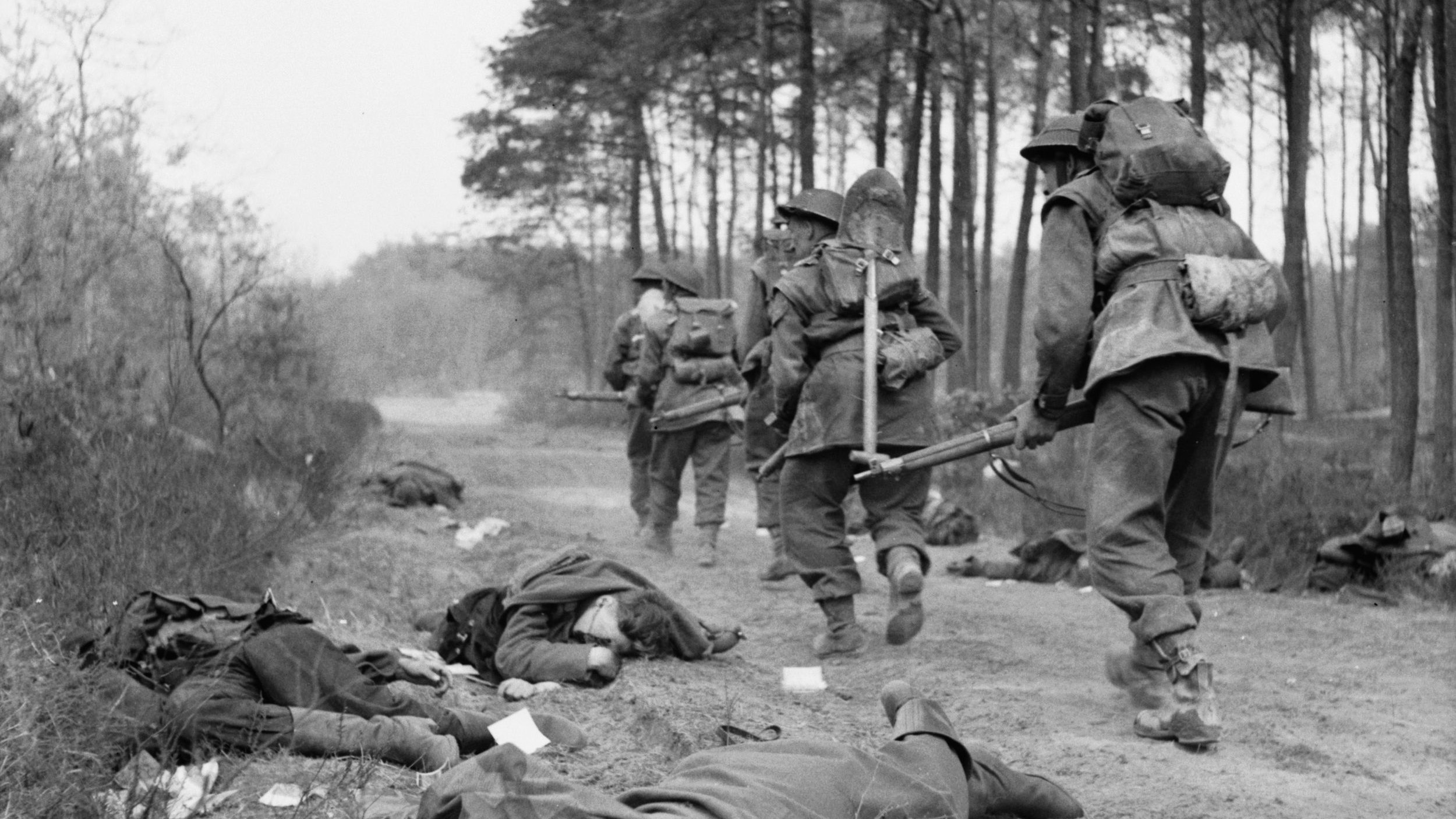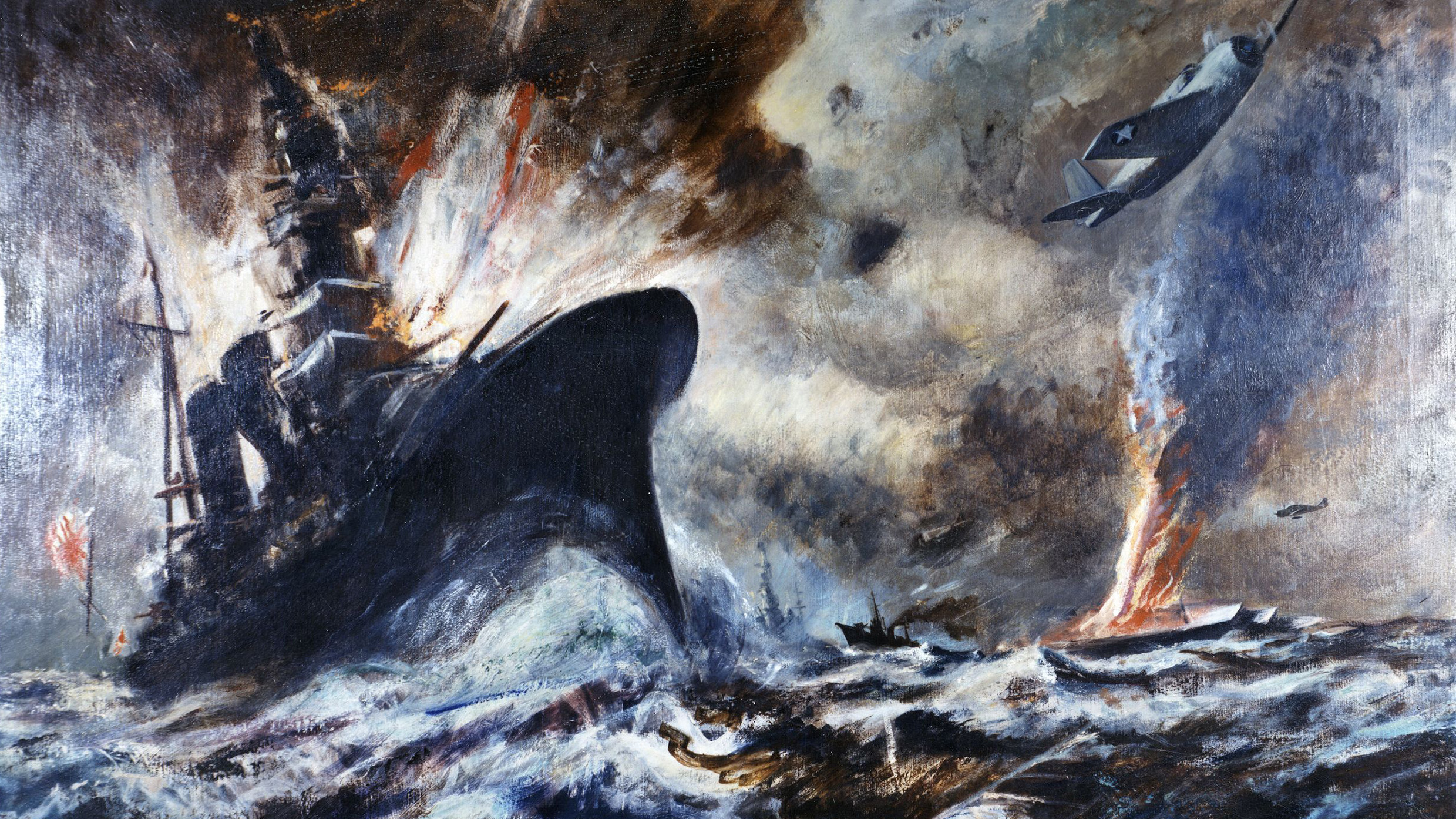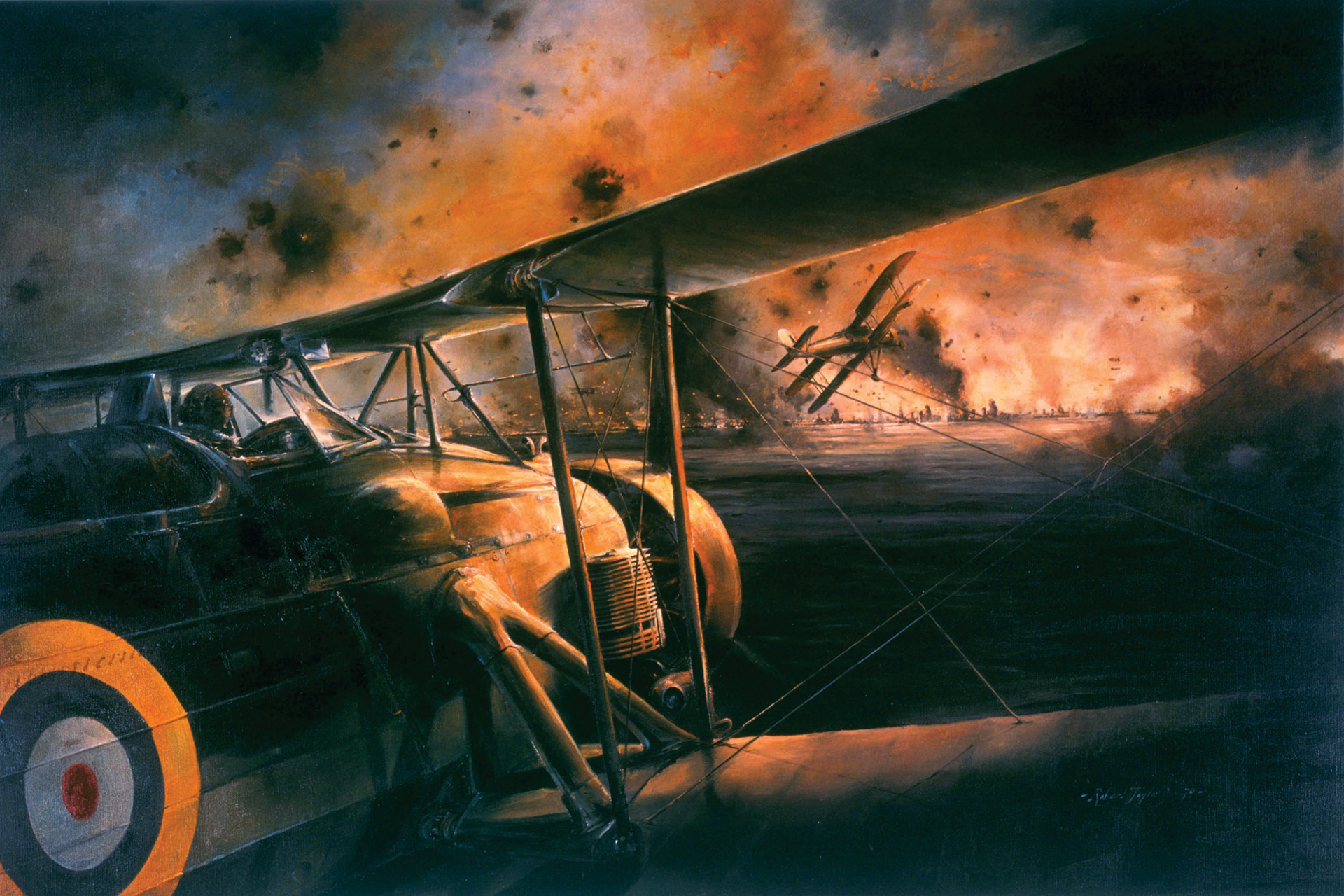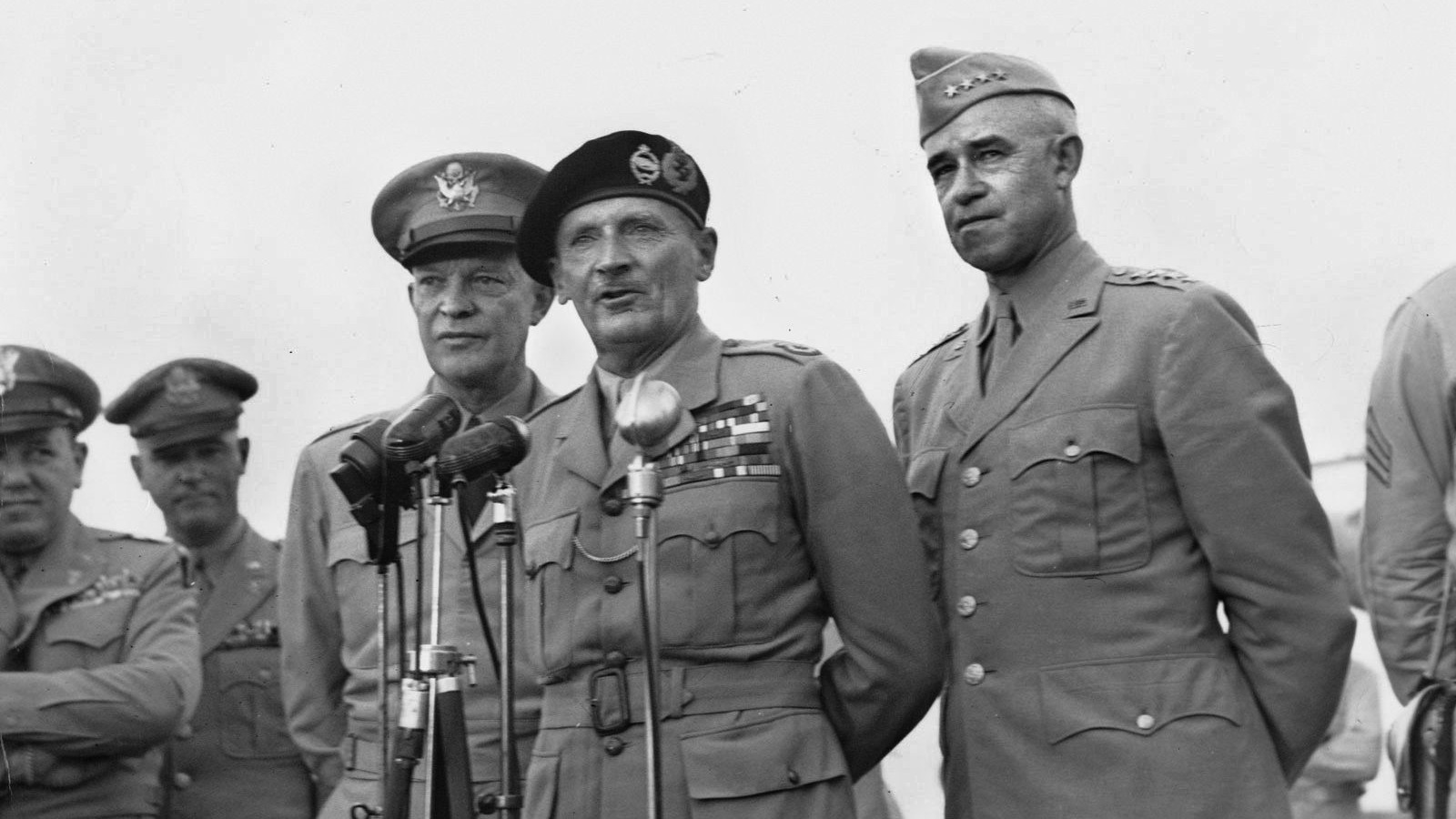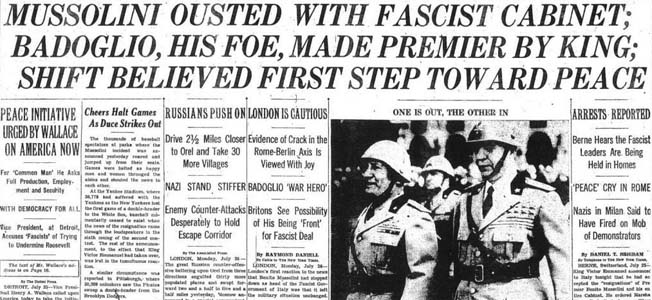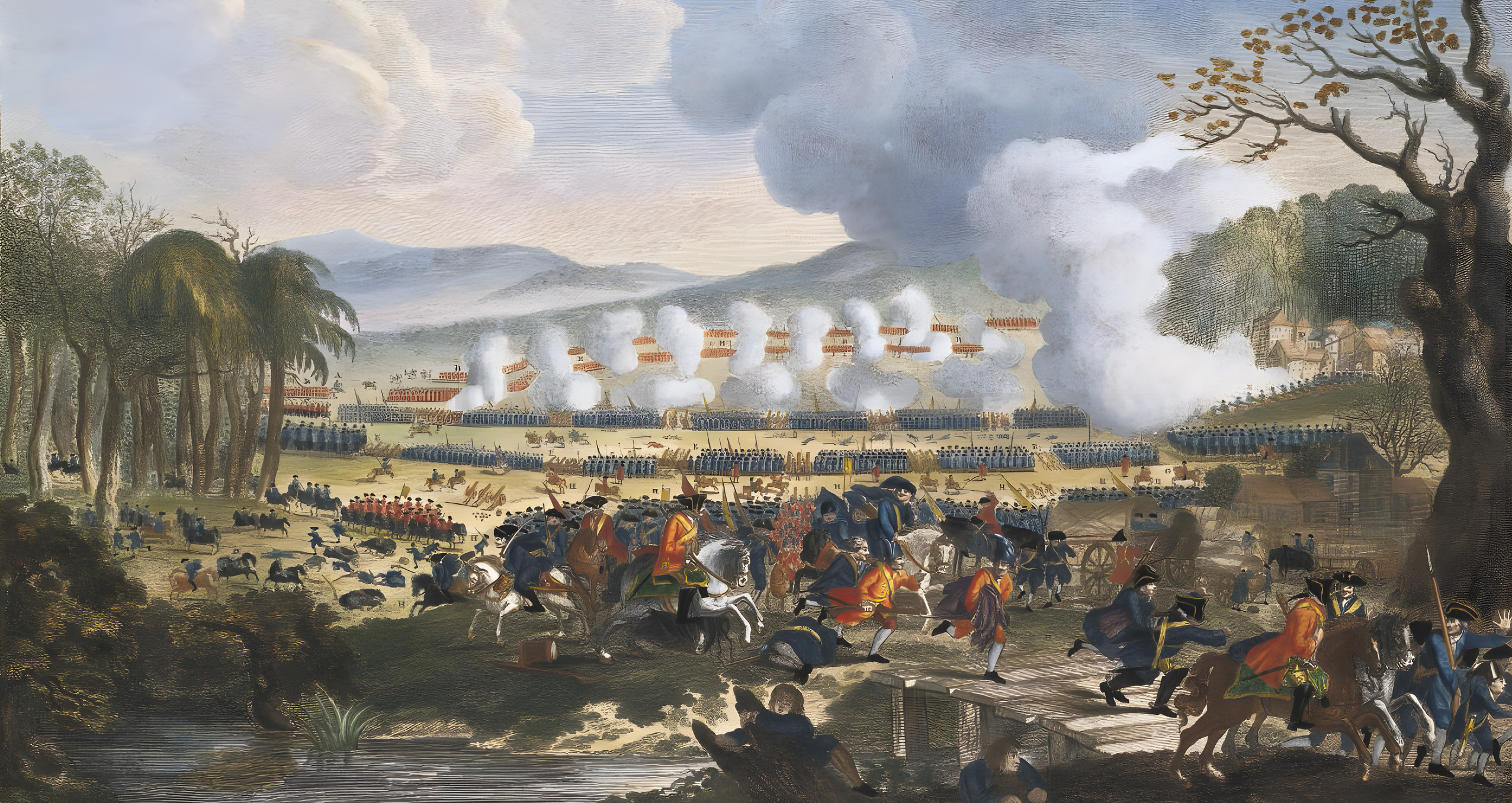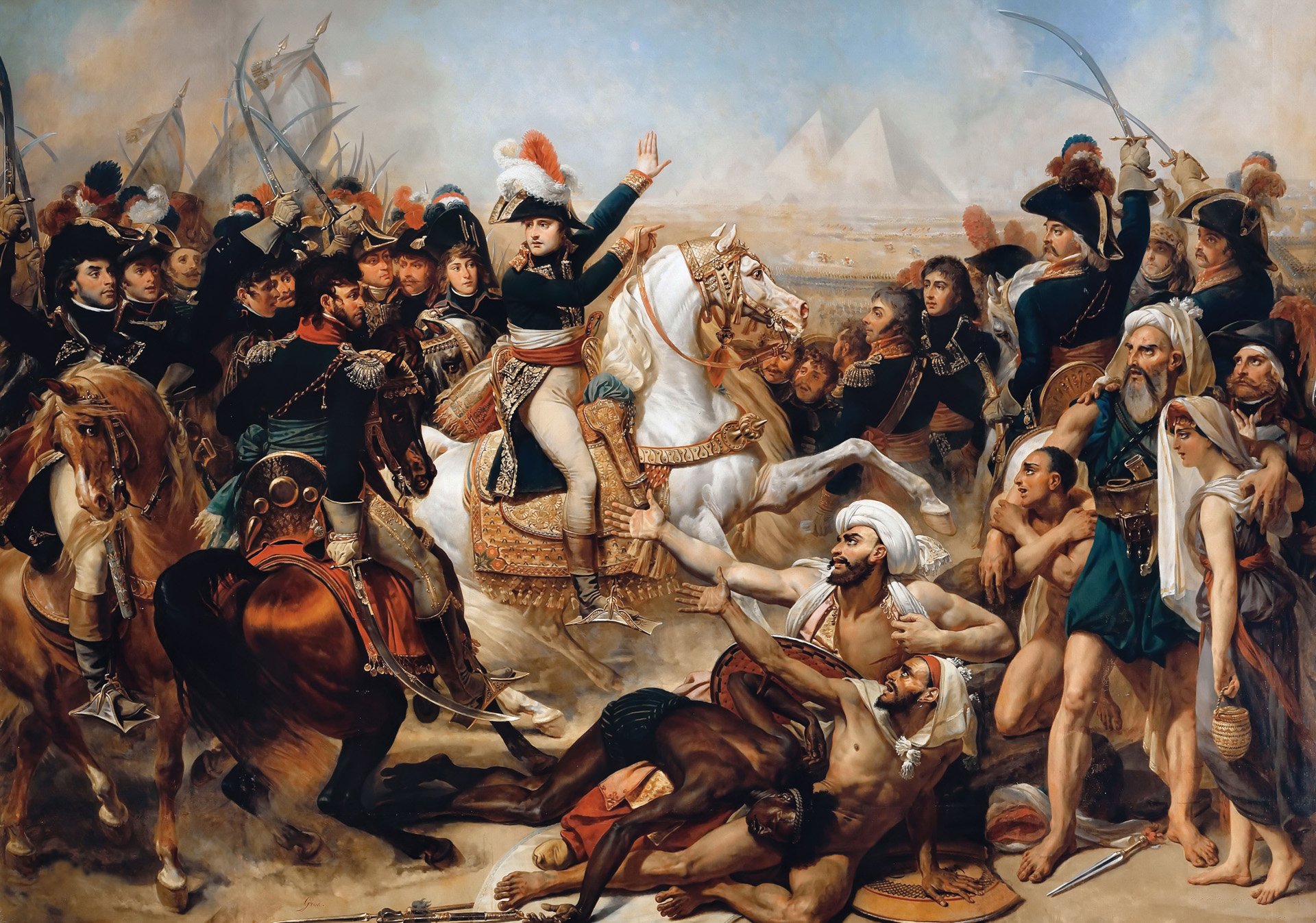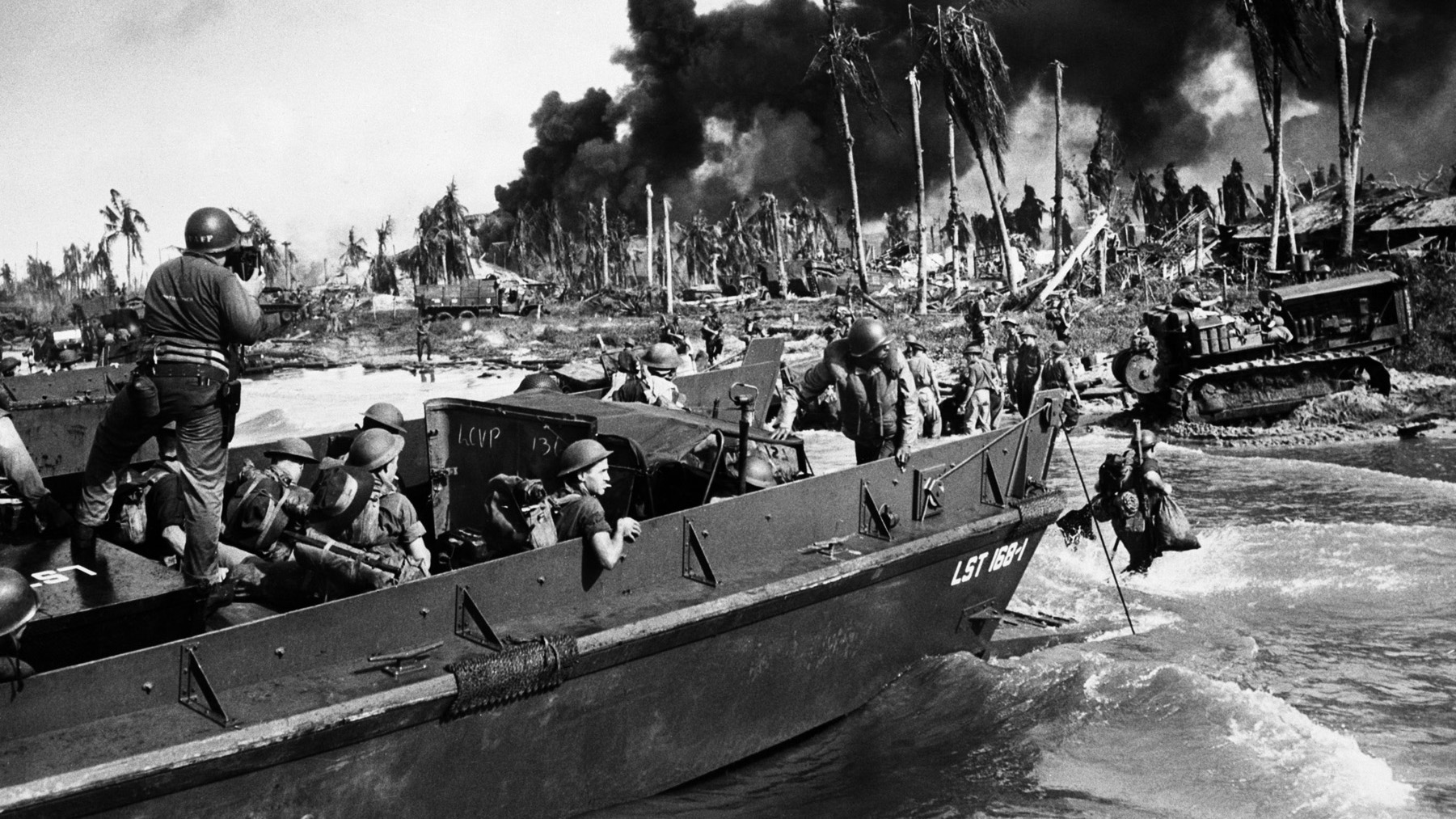By Nathan N. Prefer
He organized, trained, and commanded the 4th Marine Division in the Marshall Islands and Saipan campaigns before taking command of the Fifth Amphibious Corps and leading it against Tinian and Iwo Jima. He was on the short list for commandant of the Marine Corps after World War II, yet his name is rarely heard outside of Marine Corps official histories. He is Maj. Gen. Harry Schmidt, United States Marine Corps.
The future commander of some of the Pacific War’s most critical and deadly amphibious operations was born on September 25, 1886, in Holdrege, Nebraska. Living in Stapleton, Nebraska, he attended the Nebraska State Normal College at Kearney from 1906-1907 before accepting a commission as a second lieutenant in the 2nd Nebraska Infantry. While in the National Guard he attended the Garrison School, Fort Crook, Nebraska. His interest in a military career piqued, and the young man enrolled in Swarleys Army and Navy Preparatory School in Washington, D.C., in 1909. Upon completing that school, he resigned his commission in the National Guard on August 16, 1909, to accept an appointment with the United States Marine Corps Officer Training Program. His commission was dated the following day, and he spent the next four months at the Marine Officers School of Application at Port Royal, South Carolina. Graduating on December 20, he was ordered to the Marine Barracks, Guam.
Lieutenant Schmidt’s career then typified that of a peacetime officer. From Guam he went to China and then the Philippines before returning to Minnesota and recruiting duty. While there he received a promotion to first lieutenant and was assigned to the battleship USSArizona.In 1916, he was promoted to captain. Like many of America’s future leaders, he did not see ground combat during World War I, serving instead aboard the battleships Arizona, Montana, and Tennessee. While commanding the Marine detachment aboard the Montana,he led his men ashore at Guantanamo City, Cuba, “for protection of American lives and property.” After spending a month ashore, the detachment returned aboard ship having experienced no actual combat. Nevertheless, his excellent performance evaluations brought him another promotion, this time to temporary major on July 1, 1918.
The end of World War I saw Major Schmidt’s return to his permanent rank of captain. He spent the next few decades in a typical rotation of assignments for military officers. Between assignments afloat and ashore, he attended the Marine Corps Schools Field Officers Course at Quantico, Virginia, graduating June 2, 1923, as a permanent major. He was immediately retained by the school as an instructor until he returned to the cycle of overseas assignments, serving with the 6th Marine Regiment in China and the 2nd Marine Brigade in Nicaragua. While in Nicaragua he was assigned as the brigade intelligence officer but found results against the local insurrectionists disappointing.
Taking the advice of Captain Merritt A. “Red Mike” Edson, a future distinguished leader of Marine Raiders in World War II, Major Schmidt implemented a series of roving patrols that kept the guerrillas on the run and made the Marines much more effective at suppressing the revolt. For his innovations and other unspecified actions while in Nicaragua, Schmidt was awarded the Navy Cross “in the line of his profession as Brigade Intelligence Officer.”
Schmidt’s outstanding performance in Nicaragua earned him an appointment to the U.S. Army’s prestigious Command and General Staff School at Fort Leavenworth, Kansas, usually reserved for those expected to reach high command in the event of war. Only three of the many Marines who attended this school, Major Holland M. Smith, Major Schmidt, and Captain Roy S. Geiger, would assume the responsibilities of corps commander in World War II. Graduating with the two-year class of 1932, Major Schmidt was next assigned to the Paymaster Department at Headquarters, Marine Corps, Department of the Pacific.
During these years, Major Schmidt and his wife Doris had two children, one of whom would later serve under him as the commander of the 4th Tank Battalion in all his campaigns. By May 1934, Schmidt’s work at the Paymaster Department had earned him a promotion to lieutenant colonel.
Schmidt was still a paymaster, this time at Headquarters, Marine Corps, Washington, D.C., when the Japanese attacked Pearl Harbor on December 7, 1941. He was immediately assigned as an assistant to the Marine Corps commandant with the rank of brigadier general. Here he was officially relieved from the paymaster’s office and assigned as secretary to the commandant. His major assignment was to work with Maj. Gen. Holland M. Smith, the leading Marine Corps authority on amphibious warfare and tactics.
Brigadier General Schmidt worked at Headquarters, Marine Corps, for the next year. By 1943, the Marine Corps was undergoing a rapid expansion to provide additional means to conduct the Pacific War. Early that year Schmidt was promoted to major general and given the assignment of creating and training another Marine combat division. Schmidt was to create the 4th Marine Division from a group of units scattered across the United States from New England to California. Quickly assembling a staff, he pulled his far-flung units together in California and began an intense training program based on his earlier experiences with General Smith’s amphibious training program.
Between August 1943 and January 1944, General Schmidt and his officers worked tirelessly to train the veterans and new recruits that made up the 4th Marine Division. After numerous exercises and tests, the division was pronounced ready for combat. General Schmidt was advised that his command would take part in the next Pacific offensive to breach the enemy defenses of the Marshall Islands.
Schmidt studied his objectives, the twin islands of Roi-Namur, and agreed with the plan as prepared by General Smith, the overall commander of the Marshall Islands operation. The plan was innovative in that for the first time the Marines would land on some outlying islands near the main objectives and place their artillery there to support the main landings. This would provide early and precise support for the assaulting Marines of General Schmidt’s division. The idea was also adopted by the Army’s 7th Infantry Division, which was to seize nearby Kwajalein Island.
The 4th Marine Division sailed directly for the Marshall Islands from California, stopping only briefly at Hawaii so that General Schmidt and his senior staff could meet with General Smith’s staff. The battle commenced on the last day of January 1944 when Schmidt assigned his 25th Marine Regimental Combat Team to seize three offshore islands, after which the 14th Marine (Artillery) Regiment landed and set up its guns for the next day’s assault on Roi-Namur.
Despite the Marines’ inexperience and some problems with coordination between different units, the twin islands were secured in less than 48 hours. General Schmidt’s training and leadership had paid off with a swift victory and few casualties. Indeed, the confidence the Marine Corps officer corps had in General Schmidt is probably best expressed by the fact that no less than five Marine Corps generals’ sons served in the 4th Marine Division under his command, including the son of the commandant, Lt. Col. Archer A. Vandegrift, as well as General Schmidt’s own son, Major Richard K. Schmidt.
General Schmidt’s next assignment was more difficult. This time his 4th Marine Division, as a part of the V Amphibious Corps, would be attacking the main Japanese line of resistance, which ran through the Mariana Islands in the Central Pacific. Together with the 2nd Marine Division and the Army’s 27th Infantry Division, the V Amphibious Corps was to seize the islands of Saipan and Tinian. The Japanese were on the alert and had rushed reinforcements to these islands.
Landing on Saipan on June 15, 1944, the assault troops had a difficult and bloody struggle to establish their beachhead. Soon it was learned that the Imperial Japanese Navy had come out to contest the landings, and the U. S. Navy’s covering force, the Fifth Fleet under Vice Admiral Raymond A. Spruance, was leaving to face the oncoming threat. This forced the early landing of the reserve force, the Army’s 27th Infantry Division.
The rushed landing of the reserve placed the Army infantry among the still struggling Marines of the 4th Division. Despite brief initial confusion due to the hurried and piecemeal landing, General Schmidt immediately sorted out the units and integrated the individual Army units into his assault force while continuing to clear his section of the island. Under Schmidt’s command, Army and Marine units cooperated in the seizure of Aslito Airfield, a major objective of the campaign.
Once the Army division was ashore, those Army units assigned to General Schmidt reverted to their own division control. While the Fifth Fleet turned back the Japanese threat at sea, V Amphibious Corps continued to clear Saipan of Japanese defenders. General Schmidt’s division was on the right, with the Army division alongside on the left. Difficulties began when Schmidt’s division repeatedly outdistanced the neighboring Army regiment. So rapidly did Schmidt’s Marines advance that Holland Smith, not one to hand out compliments lightly, suggested that the division shoulder sleeve insignia be changed from a gold “4” on a red background to a race horse, signifying the speed with which it advanced.
But the rapid advance opened a dangerous gap between the two divisions. As commander of the assault forces, General Smith believed that the Army division was inefficient and that it was due to poor command and training rather than several other reasons, including strong Japanese resistance. As a result, Holland Smith asked for and received permission to relieve the Army’s division commander, General Ralph Smith.
This resulted in the infamous “Smith versus Smith” controversy, which damaged Army-Marine Corps relations for decades afterward. But what is noteworthy here is that while Army leaders were quick to condemn Holland Smith and the Marine Corps in general, they exempted General Schmidt, who often had Army units under command with no difficulties in cooperation between the two forces. Schmidt was often complimentary of the Army units fighting alongside his Marines and put many of these compliments on the record. Schmidt, a witness to many of the conversations between General Smith and the Army leaders, later wrote probably the fairest estimate of the situation for Fleet Admiral Chester W. Nimitz, Commander-in-Chief Pacific Theater.
The Saipan operation involved nearly a month of fierce fighting, which depleted all those units taking part. After all organized resistance ended, the island was declared secured and base construction for the long-range Army Air Forces bombers, which would soon destroy most Japanese major cities, began. But the “Smith versus Smith” controversy made Holland Smith a liability to the Marine Corps, which had to work with the Army to fight the Pacific War. As a result, Holland Smith was “kicked upstairs,” and his place as Commander, V Amphibious Corps, was given to General Schmidt.
Schmidt’s first assignment as the commander of the V Amphibious Corps was the seizure of the island of Tinian. Lying barely three miles off the coast of Saipan, it was critical not only because of its location so close to the developing American bases, but also due to the fact that it, too, was an excellent platform for more bomber bases from which to strike Japan.
But Tinian presented problems to the planners. Much of the island was surrounded by a coral reef, which prevented amphibious landings. There were only two good beaches, and it was obvious that the defenders would strongly cover both. However, while in command of the 4th Marine Division, General Schmidt had learned that there were two small beaches that might suffice for a surprise landing behind the main Japanese defenses. Together with Rear Admiral Harry W. Hill, commanding the Navy’s amphibious assault forces, they suggested to the naval commander, Rear Admiral Richmond Kelly Turner, that a reconnaissance be made of these beaches to see if they could be used.
Admiral Turner bluntly refused to consider the option. He ordered all planning to concentrate on the obvious beaches near the island’s capital, Tinian Town. Aware that a landing there would be costly in terms of casualties, General Schmidt and Admiral Hill decided to investigate what would come to be designated as the White beaches anyway. Using V Amphibious Corps reconnaissance Marines and underwater demolition teams, the investigation revealed that the White beaches were just barely suitable for an amphibious landing.
Once again, the two leaders approached Admiral Turner, who again refused to consider a change in plans. Rebuffed, they approached General Smith, who supported their plan for the White beaches and proceeded to have a long and loud argument with Admiral Turner. Refused again, General Smith then led a meeting with the top commander of the coming operation, Admiral Raymond Spruance. But suddenly and without explanation, at this meeting Admiral Turner changed his mind and agreed to the White beach plan.
General Schmidt’s V Amphibious Corps staff then planned the details. The result was a rare instance of an American landing behind the Japanese defenses, completely disrupting them, and a rapid campaign of nine days to secure the island. For his conduct of the Tinian campaign, Schmidt earned his second Distinguished Service Medal.
General Schmidt and his V Amphibious Corps returned to Hawaii for rest and replenishment. While there they were presented with their next assignment, the island of Iwo Jima. This volcanic island lay athwart the line that the Army Air Forces’ long-range bombers would have to take to reach Japan, and air bases there would threaten both the outbound and return journeys of these vulnerable aircraft. Much like Tinian, there were only two possible landing beaches, one on either side of the island’s narrow waist between Mount Suribachi and the rugged broken terrain in the north. But unlike Tinian, there were no other beaches available for a surprise landing.
General Schmidt was faced with no choice other than a frontal assault. The lack of a coral reef did allow for the Marines to land directly from the landing craft onto the beach, but both beaches were dominated by high ground on both sides and both had protruding land on the flanks from which the enemy could direct fire onto those beaches.
The command structure at Iwo Jima was unusual. General Holland Smith had been promoted to Commanding General, Fleet Marine Force, Pacific. General Schmidt had taken command of V Amphibious Corps, yet both men would be at Iwo Jima. As General Smith put it, “I guess they brought me along in case something happens to Harry Schmidt.” In fact, General Smith was brought along to match the status of Admiral Turner, who was again in command of the naval supporting forces, in the event of another disagreement in tactics as had occurred at Tinian.
General Schmidt wanted a much longer preinvasion bombardment than the Navy was prepared to execute. Despite support from General Smith, his request was denied. Later this request became the subject of some controversy when the heavy casualties resulting from the battle were blamed on the lack of sufficient bombardment before the assault. With only a three-day bombardment, Schmidt was forced to land his divisions, the 3rd, 4th, and 5th Marine Divisions—the largest all-Marine force of the Pacific War—across the beaches where the enemy expected them to land.
The Japanese were well prepared and expected the invasion of Iwo Jima. The resulting heavy casualties provided the basis for criticism of the Marines for their frontal assault. In fact, General Schmidt had no other options. There were no hidden beaches, no points on the island where maneuvering was possible, and the deeply hidden enemy defenses could only be destroyed by the Marine tank-infantry-artillery teams, which against such defenses inevitably suffered heavy losses. What is often overlooked is that General Schmidt did try other methods to break the enemy defenses. In one instance, he organized all three available tank battalions, one from each division, and attempted an armored thrust into the heart of the enemy defenses protecting Iwo Jima’s airfields. This failed because of the enemy’s well-prepared antitank defenses, which included thick minefields, antitank guns, and suicide troops who blew themselves and the tanks up by climbing on them with explosives.
Night attacks had some success but could not prove decisive. General Schmidt also allowed his Marines to have rest days, keeping them as fresh as possible in the grueling conditions for the ongoing attack. He further asked for the last infantry regiment of the 3rd Marine Division, held in reserve aboard ships offshore, but was denied, this time by General Smith, who demanded that Schmidt personally declare that he could not complete the campaign without the additional troops. This was obviously not the case, and General Schmidt was left to complete the month-long campaign with his exhausted Marines already ashore.
With Iwo Jima secured, V Amphibious Corps returned to Hawaii where it received its next assignment, the invasion of Japan. They were to take part in Operation Olympic, an invasion of the Japanese home island of Kyushu. With the 2nd, 3rd, and 5th Marine Divisions under his command, General Schmidt was to seize the area around Kushikino in southern Kyushu for naval and air bases for future operations. Planning was ongoing when the Japanese surrendered.
Instead of attacking Japan, the V Amphibious Corps landed peacefully at Yokosuka and Kyushu in September 1945, with the 2nd and 5th Marine Divisions beginning the occupation of Japan. The V Amphibious Corps would remain in Japan until January 1946, when corps headquarters returned to the United States for inactivation.
In a rapidly shrinking postwar Marine Corps, General Schmidt was assigned as commanding general, Marine Training and Replacement Command at San Diego. In January 1947, General Vandegrift was nearing the end of his four-year term as commandant of the Marine Corps. Secretary of Defense James V. Forrestal requested that General Vandegrift submit a short list of possible replacements. This list of six names included that of Maj. Gen. Harry Schmidt. General Vandegrift indicated that his personal favorite was Maj. Gen. Lemuel C. Shepherd, Jr., and all but eliminated the others by citing their age and, in General Schmidt’s case, the fact that he could not complete a full term due to the mandatory retirement age. As it turned out, neither General Shepherd nor General Schmidt received the appointment, which went to Maj. Gen. CLifton B. Cates.
Schmidt retired the following year after 39 years as an officer in the Marines. He was promoted to lieutenant general upon retirement. He died on February 19, 1968, exactly 23 years after the Iwo Jima landing, at the age of 81. His death, as was his career, was little noted.
Nathan N. Prefer is the author of several books and articles on World War II. His latest book is titled Leyte 1944, The Soldier’s Battle. He received his Ph.D. in Military History from the City University of New York and is a former Marine Corps Reservist. Dr. Prefer is now retired and resides in Fort Myers, Florida.
